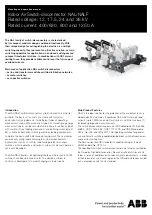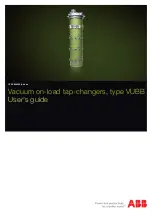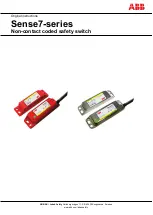
BigIron RX Series Configuration Guide
353
53-1001810-01
State machines
13
•
Port Timers – This state machine is responsible for triggering any of the state machines
described above, based on expiration of specific port timers.
In contrast to the 802.1D standard, the RSTP standard does not have any bridge specific timers. All
timers in the CLI are applied on a per-port basis, even though they are configured under bridge
parameters.
RSTP state machines attempt to quickly place the ports into either a forwarding or discarding state.
Root ports are quickly placed in forwarding state when both of the following events occur:
•
It is assigned to be the Root port.
•
It receives an RST BPDU with a proposal flag from a Designated port. The proposal flag is sent
by ports with a Designated role when they are ready to move into a forwarding state.
When a the role of Root port is given to another port, the old Root port is instructed to reroot. The
old Root port goes into a discarding state and negotiates with its peer port for a new role and a new
state. A peer port is the port on the other bridge to which the port is connected. For example, in
Figure 43
, Port1 of Switch 200 is the peer port of Port2 of Switch 100.
A port with a Designated role is quickly placed into a forwarding state if one of the following occurs:
•
The Designated port receives an RST BPDU that contains an agreement flag from a Root port
•
The Designated port is an Edge port
However, a Designated port that is attached to an Alternate port or a Backup port must wait until
the forward delay timer expires twice on that port while it is still in a Designated role, before it can
proceed to the forwarding state.
Backup ports are quickly placed into discarding states.
Alternate ports are quickly placed into discarding states.
A port operating in RSTP mode may enter a learning state to allow MAC address entries to be added
to the filtering database; however, this state is transient and lasts only a few milliseconds, if the
port is operating in RSTP mode and if the port meets the conditions for rapid transition.
Handshake mechanisms
To rapidly transition a Designated or Root port into a forwarding state, the Port Role Transition state
machine uses handshake mechanisms to ensure loop free operations. It uses one type of
handshake if no Root port has been assigned on a bridge, and another type if a Root port has
already been assigned.
Handshake when no root port is elected
If a Root port has not been assigned on a bridge, RSTP uses the
Proposing -> Proposed -> Sync ->
Synced -> Agreed
handshake:
•
Proposing – The Designated port on the root bridge sends an RST BPDU packet to its peer port
that contains a proposal flag. The proposal flag is a signal that indicates that the Designated
port is ready to put itself in a forwarding state (
Figure 43
). The Designated port continues to
send this flag in its RST BPDU until it is placed in a forwarding state (
Figure 46
) or is forced to
operate in 802.1D mode. (Refer to
“Compatibility of RSTP with 802.1D”
on page 374)
•
Proposed – When a port receives an RST BPDU with a proposal flag from the Designated port
on its point-to-point link, it asserts the Proposed signal and one of the following occurs
(
Figure 43
):
Summary of Contents for Brocade DCX
Page 40: ...xl BigIron RX Series Configuration Guide 53 1001810 01 ...
Page 72: ...lxxii BigIron RX Series Configuration Guide 53 1001810 01 ...
Page 88: ...16 BigIron RX Series Configuration Guide 53 1001810 01 Searching and filtering output 1 ...
Page 300: ...228 BigIron RX Series Configuration Guide 53 1001810 01 Displaying IP information 7 ...
Page 318: ...246 BigIron RX Series Configuration Guide 53 1001810 01 Deploying a LAG 8 ...
Page 418: ...346 BigIron RX Series Configuration Guide 53 1001810 01 SuperSpan 12 ...
Page 482: ...410 BigIron RX Series Configuration Guide 53 1001810 01 MRP CLI example 14 ...
Page 506: ...434 BigIron RX Series Configuration Guide 53 1001810 01 Displaying VSRP information 15 ...
Page 582: ...510 BigIron RX Series Configuration Guide 53 1001810 01 Viewing Layer 2 ACLs 20 ...
Page 634: ...562 BigIron RX Series Configuration Guide 53 1001810 01 Troubleshooting ACLs 21 ...
Page 642: ...570 BigIron RX Series Configuration Guide 53 1001810 01 Trunk formation 22 ...
Page 746: ...674 BigIron RX Series Configuration Guide 53 1001810 01 Displaying RIP filters 24 ...
Page 808: ...736 BigIron RX Series Configuration Guide 53 1001810 01 Displaying OSPF information 25 ...
Page 938: ...866 BigIron RX Series Configuration Guide 53 1001810 01 Displaying MBGP information 27 ...
Page 950: ...878 BigIron RX Series Configuration Guide 53 1001810 01 Using secure copy 28 ...
Page 988: ...916 BigIron RX Series Configuration Guide 53 1001810 01 Clearing IS IS information 29 ...
Page 1054: ...982 BigIron RX Series Configuration Guide 53 1001810 01 Sample 802 1x configurations 33 ...
Page 1108: ...1036 BigIron RX Series Configuration Guide 53 1001810 01 sFlow 39 ...
Page 1190: ...1118 BigIron RX Series Configuration Guide 53 1001810 01 Displaying RIPng information 44 ...
Page 1270: ...1198 BigIron RX Series Configuration Guide 53 1001810 01 Displaying ACLs 47 ...
Page 1310: ...1238 BigIron RX Series Configuration Guide 53 1001810 01 Displaying OSPFv3 information 48 ...
Page 1382: ...1310 BigIron RX Series Configuration Guide 53 1001810 01 Commands That Require a Reload D ...
Page 1435: ...BigIron RX Series Configuration Guide 1363 53 1001810 01 VSRP E ...
Page 1436: ...1364 BigIron RX Series Configuration Guide 53 1001810 01 VSRP E ...
















































